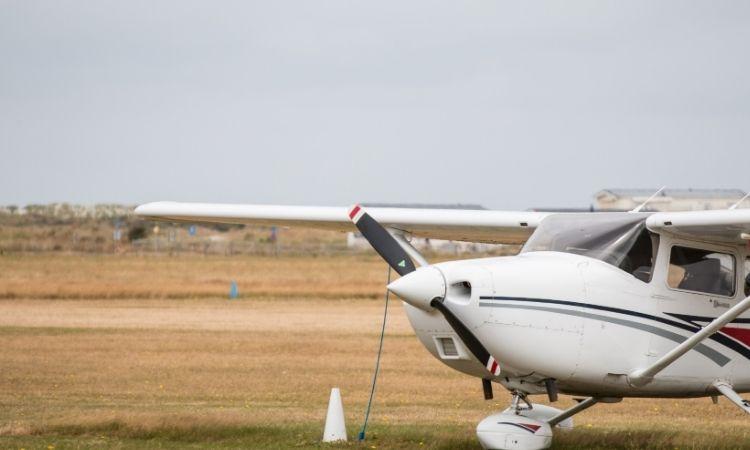Look up on any clear morning and you may see a bright‑winged Cessna carving lazy loops above the horizon or a sleek Cirrus arrowing toward the mountains. That small silhouette represents the beating heart of flight’s most personal realm—general aviation. Unlike the regimented schedules of airlines or the roar of military jets, general aviation is about choice and intimacy: business travellers routing themselves to tiny airfields minutes from meetings, medical teams racing organs to waiting surgeons, hobbyists chasing sunsets for no reason other than joy. It is a playground of freedom where sky and runway meet ambition, powered by equal parts precision engineering and wide‑eyed wonder.
Expert Market Research Insight into General Aviation
Analysts at Expert Market Research observe that General Aviation now thrives on a fusion of grassroots passion and high‑tech pragmatism. They highlight how flight schools, owner‑pilots, and charter operators increasingly invest in glass cockpits, satellite connectivity, and data‑driven maintenance systems that predict part fatigue before a wrench is lifted. EMR notes that communities embracing small‑airport development often report stronger STEM education interest, tourism boosts, and faster emergency response times—evidence that thoughtfully nurtured general aviation can magnify regional resilience and innovation without requiring airline‑scale infrastructure.
The Spirit and Scope of Personal Flight
General aviation defies neat categorization. It ranges from two‑seat gliders surfing invisible thermals to corporate turboprops whisking executives across continents. Agricultural sprayers skim crops with laser‑guided precision, while aerial photographers immortalize wedding proposals from five hundred feet. Humanitarian pilots ferry vaccines to remote valleys, and weekend flyers use skyward shortcuts to visit relatives in half the time a highway would demand. At its center lies the idea that airspace belongs to dreamers as well as giants, and the dreamers keep pushing practical boundaries—landing on river sandbars, delivering supplies to snow‑locked villages, mapping firelines for crisis teams.
From Ground School to Solo: Crafting Aviators with Skill and Grit
No one simply takes off; they earn their wings through disciplined study and muscle memory. Aspiring pilots absorb meteorology, aerodynamics, radio phraseology, and the intricate dance of airspace classes before logging a single supervised takeoff. Instructors drill cockpit resource management—an art of dividing attention among instruments, engine sound, and weather beyond the windshield. The first solo flight, though often just three touch‑and‑go circuits, brands a lifelong confidence that rigorous preparation turns vast uncertainty into manageable risk. Subsequent ratings—instrument, multi‑engine, seaplane—add layers of capability, each unveiling new adventures and responsibilities amid changing clouds.
Machines of Purpose: From Fabric Dreams to Carbon Fiber Arrows
Early barnstormers stitched linen over wooden ribs, trusting little more than instincts and oil‑splattered goggles. Today’s general‑aviation fleet blends heritage charm with modern muscle. Classic taildraggers still wag happy rudders on grass strips, yet composite aircraft with ballistic parachutes now cruise faster than some regional jets of the 1980s. Diesel piston engines sip fuel like economy cars, and hybrid‑electric prototypes promise whisper‑quiet climbs that leave songbirds unfazed. Even rotorcraft evolve: lightweight autogyros give photographers slow, stable hover‑like vantage points without the high operating costs of helicopters. Each design addresses a niche, reminding onlookers that sky access is a mosaic, not a monolith.
Safety in Three Dimensions: Culture, Technology, and Continuous Learning
Aviation teaches humility; skies reward preparation but punish complacency. Modern cockpits bristle with terrain‑avoidance radars, synthetic‑vision overlays, and instantaneous weather uplinks, yet culture remains the primary safety engine. Pre‑flight briefings still start with pilots assessing their own mindset—fit to fly or feeling distracted? Checklists, kneeboard notes, and sterile cockpit rules reinforce disciplined habits honed since the Wright brothers scribbled wind calculations on scraps of fabric. Accident statistics reveal steady declines when communities embrace open accident debriefs and scenario‑based training, proving that transparent storytelling often saves more lives than any single gadget.
Greener Horizons: Toward Sustainable Personal Flight
The romance of flight meets a modern imperative: reduce carbon footprints without grounding dreams. Biofuels blended into avgas already power cross‑country charity races, while all‑electric trainers quietly loop patterns at regional fields, their propeller hum softer than passing traffic. Lightweight batteries and high‑efficiency motors slash operating costs, enabling more students to afford lessons. Meanwhile, aerodynamic retrofits—wheel‑pants, gap seals, vortex generators—help legacy aircraft cruise farther on fewer gallons. Builders experiment with hydrogen fuel cells, hoping to pair zero emissions with quick refueling. Every incremental breakthrough edges general aviation toward a future where the blue yonder stays just as blue.
Tomorrow’s Runway: Urban Air Mobility and Cloud‑Linked Cockpits
Futurists envision networks of rooftop pads hosting autonomous eVTOL air‑taxis that zip commuters above snarled streets. While certifications and noise regulations remain hurdles, prototypes already hover in demonstration flights, guided by flight‑management software that talks seamlessly with drones and airline jets alike. For existing pilots, electronic flight bags stream real‑time engine analytics to phones, letting mechanics diagnose anomalies before a pilot even taxis back. Augmented‑reality visors overlay glide paths on windshields, giving student pilots fighter‑jet levels of situational awareness. Such technology not only widens access but also shifts the narrative: tomorrow’s pilot may focus less on dials and more on big‑picture decision making.
Final Approach: The Endless Invitation of the Open Sky
General aviation endures because it offers a profoundly human ratio of challenge to reward. Each takeoff rolls possibility down a runway; each landing restores gratitude for the ordinary ground. From life‑saving medical flights to solitary dawn patrols that paint wings gold, these small aircraft carry stories that commercial cabins cannot replicate. As innovation aligns with stewardship and safety, the invitation grows louder: step into the cockpit, feel the subtle tremor of power, lift the nose, and rediscover how vast and welcoming the world becomes when viewed from a thousand feet above the familiar path.



